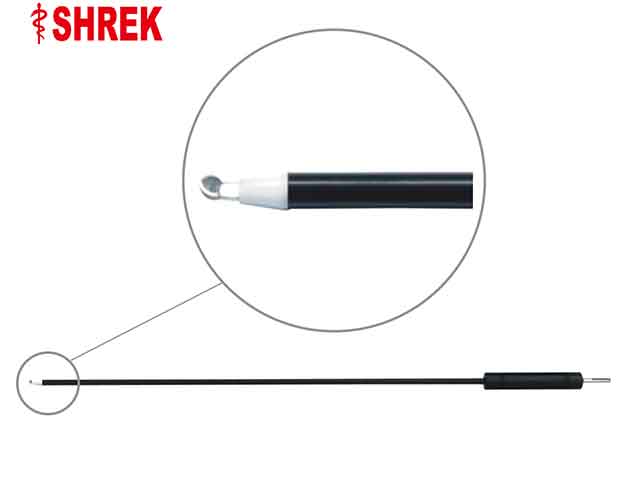Precautions for cleaning equipment in obstetrics and gynecology
Obstetrics and gynecology instruments are divided into 450 types according to their specifications, and they are divided into gynecological and obstetrical use according to their uses. Common obstetrics and gynecological operations mainly include caesarean section, hysterectomy, gynecological examination and outpatient hysteroscopy, etc. Some devices have relative structures More complicated, like a vaginal surgical dilator and a retractor for the abdominal wall

Laparoscopy Instruments Electric Coagulation Spade
Part of the surgical forceps and surgical forceps heads are circular, which is convenient for gripping a large area of tissue
The most difficult instruments to clean are uterine curettage and fallopian tube drainage device fallopian tube drainage device
These devices generally have long heads, small tube diameters, narrow lumens, open at one end and blind at the other end. They are very difficult to clean, and contaminants are likely to remain, which poses a potential risk of cross-infection. Common pretreatment-cleaning methods are as follows:
Commonly used methods include ultrasonic and enzyme immersion cleaning method and automatic cleaning machine cleaning, the former has better cleaning effect.
step1: rough washing: the function of rough washing is to remove the dirt on the inner and outer surfaces of the instrument head, reduce the bioburden and keep the lumen unobstructed. It is easy to clean in the next step.
The method is to first rinse the outer surface of the head with tap water to remove the visible dirt attached to the surface, and then repeatedly rinse the inner wall of the cavity with a high-pressure water gun for no less than 10 seconds. If the rinse encounters resistance, it indicates that there is solidification in the head Contaminants can be repeatedly scrubbed with a matching brush, and then rinsed with a high-pressure water gun. Due to the high pressure of the water gun, resistance will be encountered during the flushing process, and the water will be splashed to the operator. Personal protection is required during operation.
Step 2: Enzymatic hydrolysis and ultrasonic cleaning
Function: Decompose and separate the dry contaminants in the instrument head to ensure the cleaning effect.
Method: Put the rough-washed instrument head into the automatic ultrasonic cleaning machine. After debugging the machine, just turn on the switch. The process is to organically combine the cleaning solution immersion and ultrasonic vibration to remove or loosen the tightly adhered fine organic pollutants or oxides on the inner wall of the head to the greatest extent.
step3: fine washing: the function of this process is to completely remove all kinds of pollutants on the head. Used to ensure the success of sterilization.
Method: Take out the ultrasonically cleaned instrument head, use the matching brush, rinse it repeatedly under pure running water, and then rinse it with a high-pressure water gun. (Water gun flushing should not be less than 10 seconds, the water in the water gun is pure water, and the water pressure is 4 water pressures) It can completely remove all kinds of tiny pollutants. Blow dry with an air gun and wait for the next step.
However, these difficult-to-clean instruments are generally replaced by disposable ones in clinical practice. For example, abortion suction devices are divided into manual and electric two types. Manual negative pressure abortion suction devices are disposable suction heads and suction tubes. The suction tube is thin and soft. , The traction of the cervix and endometrial trauma are very small, and the pain to the patient is small. There are also disposable tubal tuners, because metal ones are more difficult to scrub, and the rubber plugs are easily aging after repeated disinfection. In addition, tubal tuners have more side effects, which can easily cause water accumulation and re-adhesion. Hospitals with conditions can replace them with tubal radiography. .
Foam enzyme pretreatment can replace the current rough washing process. The advantage of Misa multi-enzyme cleaning agent is the removal of biofilm on the inner wall of luminal instruments. Using Misa multi-enzyme cleaning agent can improve the cleaning quality of luminal instruments and reduce the difficulty of cleaning. The workload and intensity of hand brushing.
The cleaning of luminal instruments is generally difficult. Appropriate cleaning tools and cleaning techniques must be used to ensure the cleaning quality and effectively control the occurrence of nosocomial infections caused by incomplete cleaning.

